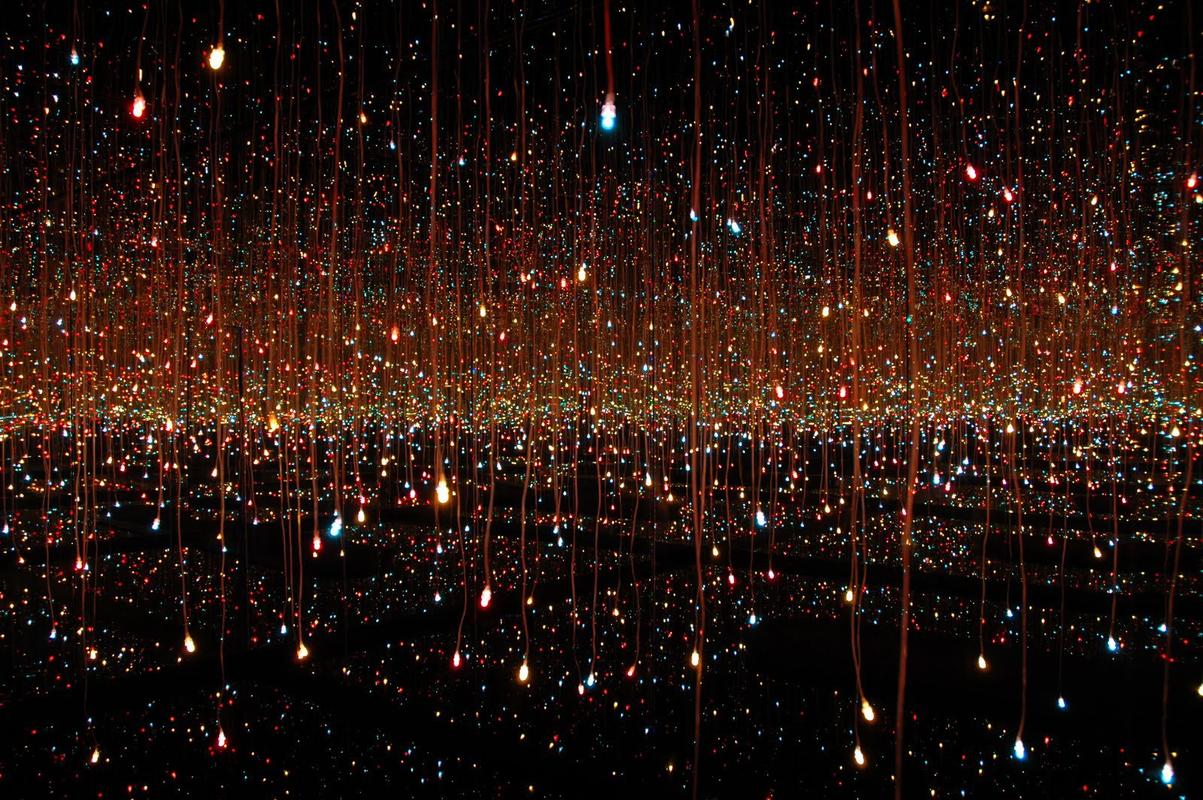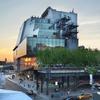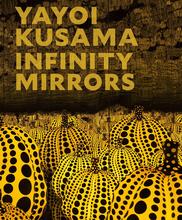More about Fireflies on the Water
- All
- Info
- Shop

Contributor
Fireflies on the Water by Yayoi Kusama is what I imagine heaven is like – and not just like heaven for your Insta story (although it is that too).
Made in 2002, a whopping 11 years before Infinity Mirrored Room (the very famous one), Fireflies on the Water is an experience the likes of which this world had never had before. I mean, she did a similar thing with phalluses called Infinity Mirror Room—Phalli’s Field but it’s really not the same thing. Much more penises. Much less twinkly lights. What she did with Fireflies on the Water is she made a small room, covered it with mirrors, put a little bit of water on the bottom, hung up 150 small lights, and put a dock-like viewing platform from which to experience the space. It’s pretty much the closest us normies are going to get to being astronauts. Let the existential crises begin! Unfortunately (or fortunately?) you crisis has a time limit on it. Because everyone wants to see Fireflies on the Water, no one can see it for more than one minute. So you have to really emotionally prepare if you want to have a full fledged meltdown in the 58 remaining seconds after you enter the installation. I guess this is an advantage of an incredibly long waiting line, though. More time to brace yourself for questioning your place in the multiverse.
This piece is said to “embod[y] an almost hallucinatory approach to reality.” It plays with references to things like the myth of Narcissus, who falls in love with his reflection, and as a result withers away in front of it (perhaps another benefit of the time limit). But it’s probably hard to catch references when you’re focusing so intensely on yourself. All in all, Fireflies on the Water is everything you could ever want in an installation piece. It’s Instagram-able for the influencers out there. It’s self-reflective for us self-centered millennials. It’s ominous for the pessimists and enlightening for the optimists. It’s pretty much impossible not to like.
Sources
- Brooks, Katherine. "Yayoi Kusama’S ‘Fireflies On The Water’ At The Whitney (PHOTO)." HuffPost UK. N.p., 2012. Web. 17 Aug. 2018.
- Cascone, Sarah. "Kusama Retrospective Draws Massive Crowds - Artnet News." artnet News. N.p., 2014. Web. 17 Aug. 2018.
- Grimes, William. "Yayoi Kusama’S ‘Mirrored Room’ At David Zwirner Gallery." Nytimes.com. N.p., 2013. Web. 17 Aug. 2018.
- Vankin, Deborah. "Yayoi Kusama's Infinity Mirror Rooms At The Broad: A First Look Inside The 'Infinite Mysterious Beauty'." Latimes.com. N.p., 2017. Web. 17 Aug. 2018.
- "Yayoi Kusama's: Fireflies On The Water | Whitney Museum Of American Art." Whitney.org. Web. 17 Aug. 2018.
















